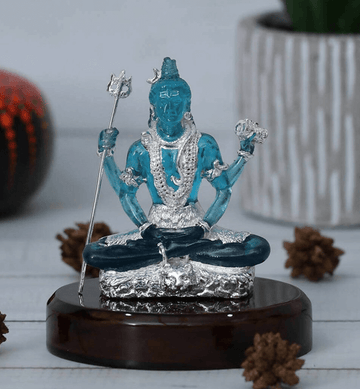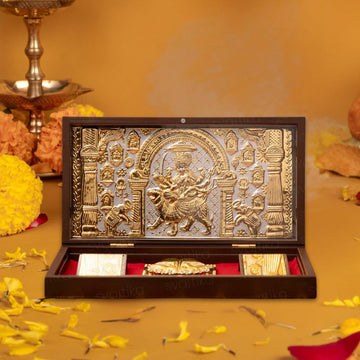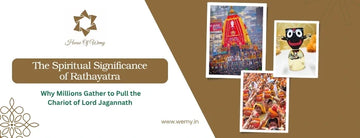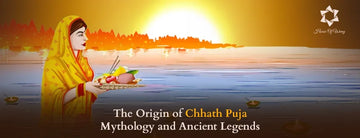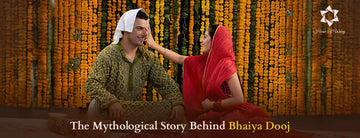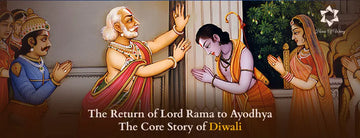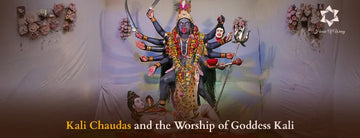Heart of Sanatan Dharma on Wheels: A sacred journey of devotion and divine connection.
Introduction:
Have you ever been in a crowd of millions and felt completely alone with the Divine? That is the beauty of the Jagannath Rathayatra: a swirling vortex that is a myriad of bodies, colours, sounds, and experiences, and yet located within it all is a solemn atonement that calls you to return to your own soul. Every year, as the rath yatra chariot rolls down the Grand Road of Puri, it carries not just the Lord Jagannath Idol, Balabhadra, and Subhadra, but also the perennial expression of humankind's longing to again reconnect with the Divine.
That yearning is not geographically bound. People who are celebrating the Rathayatra from New York to Nairobi are all declaring: "The Lord does not only reside in temples: He comes to us, He walks amongst us." Even in an age of digital screens and spiritual fatigue, this ancient chariot festival India pulls us like a magnet. But what else lies beneath this colorful and vibrant festival? What causes millions to gather year after year with such fervour?
Historical Origins of Rath Yatra Festival
According to the depths within the Skanda Purana and the Brahma Purana, the ceremony of Jagannath Yatra carries thousands of years of history. Puri, one of the pilgrimage sites of the Char Dham, has served as the location for this annual celebration for centuries.
Rathayatra means "Chariot Journey." However, this physical movement of the deities represents something bigger than just the movement. It represents the journey of a soul from ignorance to enlightenment. Generally, the Lord is cocooned in the inner sanctum of His temple. By standing on a chariot outside His temple, the Lord leaves the confines of His temple to offer blessings to everyone, including those who are restricted from the temple for caste, creed, or class limitations.
By literally stepping off the proverbial boundary, the Lord challenges every exclusivity in spirituality. The spiritual meaning Rath Yatra is that the Divine does not wait to be worshiped; the Divine comes looking for you.
Symbolism Behind the Chariot and the Journey
Every part of the Rath Yatra chariot holds deep spiritual meaning:
- The Chariot (Rath): Represents the human body.
- The Rope (used to pull the chariot): Symbolizes devotion and spiritual effort.
- The Wheels: The ceaseless cycle of birth, death, and rebirth.
- The Journey: A reminder that the Lord travels with us, not over us.
Pulling the chariot is not simply a ritual; it is a potent representational act of bhakti (devotion) in assuming the responsibility of moving closer to God. It is sacred. It is said that the merit earned is enough to clear lifetimes of karma.
Spiritual Meaning of Pulling the Chariot
In Vedic thought, the body is a chariot, the senses are horses, and the soul is the passenger. To pull the chariot of Lord Jagannath is to become a servant of the soul, to align one’s life with dharma, and to invite the Divine into our journey.
The ropes become instruments of surrender. The pulling becomes a yajna, a fireless sacrifice. Every tug on the rope is a whispered prayer: “Take me with you.”
Role of Devotion and Bhakti in Rathayatra
Rathayatra is perhaps the greatest celebration of bhakti yoga in Hinduism. It is unfiltered, raw, and inclusive. No Sanskrit verses are needed. No initiations, no barriers. Just the raw cry of the heart.
As Chaitanya Mahaprabhu once danced before Lord Jagannath in a trance-like state, he epitomizes what bhakti could look like: madness for the Divine. Today, followers of Gaudiya Vaishnavism and ISKCON continue that tradition, making Jagannath celebration a global phenomenon of joy, song, and deep surrender.
Rathayatra in Puri: The Largest Event
Puri Rath Yatra 2025 will hold its celebration, and millions will come again. The scale is mind-boggling.
Jagannath's chariot (Nandighosha) rolls on 16 wheels and is 45 feet tall.
Balabhadra's (Taladhwaja) chariot has 14 wheels alone.
Subhadra's (Darpadalana) chariot is the smallest with 12 wheels.
Each year, new chariots are constructed for the festival, made of sacred neem wood, as a reminder of transience and divinity.
The journey from Jagannath Temple to Gundicha Temple to back to Jagannath Temple lasts for nine days and includes rituals beginning on Snana Yatra for ritual bathing to the ending journey called Bahuda Yatra.
The Rituals and Events Leading Up to Rathayatra
Rathayatra is not a one-day event or festival. It begins weeks before:
- Snana Purnima: The deities are bathed using 108 pots of water.
- Anasara: After the bathing, the deities fall 'ill' and are not seen for 15 days.
- Nava Yauvana Darshan: They reappear, refreshed and bright.
- Rathayatra Begins: The chariots are pulled from the Jagannath Temple to Gundicha Temple.
Each phase is a symbolic illness, withdrawal, rejuvenation and re-emergence. These stages reflect the cycles of falling down, healing, and redemption in our own lives.
The Significance of the Trinity in the Procession
The Jagannath idol, along with Balabhadra and Subhadra, forms a rare divine sibling triad. Each represents a cosmic principle:
- Jagannath: Supreme consciousness (Purusha)
- Balabhadra: Strength, dharma, and protection
- Subhadra: Shakti, divine energy, and grace
Their unified presence on the chariots shows the balance of masculine and feminine energies, of action and surrender, of stillness and movement woven together in one divine narrative.
The Concept of God Coming to the Devotees
In most traditions, the devotee goes to the temple. But in Jagannath Yatra tradition, God comes out to meet His devotees. This inversion is not trivial; it carries enormous spiritual significance.
It echoes the message of the Bhagavad Gita: "Whenever there is a decline in righteousness, I descend…"
The chariot is the Lord’s way of saying: “You are not alone. I will come to you.”
Rath Yatra in Gaudiya Vaishnavism and ISKCON
For ISKCON practitioners, Rathayatra is much more than just a festival; it is a spiritual lifeline. Following the example of Chaitanya Mahaprabhu, ISKCON exported Rathayatra to cities such as London, New York City, and Melbourne, where thousands of Sri Krishna devotees now chant, dance, and pull the rope for the Lord in annual Rathayatras.
The ecstatic energy is palpable, the bhakti is real, and seeing a lord Jagannath moving on a float in Manhattan or through the streets of Paris is nothing if not divine irony and divine love.
Global Celebrations: Rathayatra Around the World
From Durban to Dublin, the Jagannath celebration has crossed borders. Hindu festivals India have inspired adaptations worldwide. Temples recreate the original rituals with precision. Even where traditional chariots are not possible, makeshift floats become vessels of devotion.
The universality of the message is what makes spiritual festivals India, like Lord Jagannath Rathayatra, resonate across cultures: The Divine is not far. He walks with you.
Philosophical Interpretations of the Journey
The Rath Yatra significance also lies in what it teaches us philosophically:
-
The body is temporary, the soul eternal.
-
Every life is a journey back to the Source.
-
We are not pulling the Lord. He is pulling us with love, with grace.
This is why the face of the Lord Jagannath idol is ever-smiling, with round eyes that never blink. He watches us always with compassion, with patience.
Cultural Impact and Community Participation
In Puri and beyond, Rathayatra is a unifier. Artists, carpenters, priests, and volunteers all contribute. Homes are cleaned. Streets are decorated. Children learn the stories. Elders pass on wisdom.
It becomes a festival of community, of shared purpose. A symbol of what Dharma truly is, not personal liberation alone, but collective elevation.
Connection to Modern Lifestyles
In today’s fast-paced world, traditions like Rathayatra can feel distant. But they can be integrated:
- Create a small altar at home with a Lord Jagannath idol.
- Recite the Jagannath Ashtakam during the festival.
- Pull a symbolic chariot with your children and share its meaning.
- Join local Ratha Yatras or virtual celebrations hosted by ISKCON.
Such acts ground us. They bring Sanatan Dharma into our apartments and urban routines.
Astrology & Numerology Insights
The Rathayatra begins on Ashadha Shukla Dwitiya, a date believed to align with certain planetary energies favourable for self-purification and divine connection.
- Number 3 (Trinity): Symbolises harmony of body, mind, and soul.
- Rath Yatra’s date often coincides with auspicious Nakshatras, lunar mansions that enhance spiritual receptivity.
These aren’t superstitions, they are cosmic rhythms that Sanatan Dharma has honoured for millennia.
Bring the Spirit Home
If you’re seeking to bring the divine essence of Jagannath Yatra tradition into your space, Wemy’s handcrafted Lord Jagannath idols offer a soulful connection.
Each piece is more than décor, it is a murti, an embodiment of presence. Placed in your home, it becomes a reminder of the Lord’s promise: “I will come to you, wherever you are.”
Final Thoughts
In a world that often feels fragmented and rushed, Rathayatra reminds us of something timeless that the Divine doesn’t wait for perfection. He responds to love.
Whether you stand in the streets of Puri or your living room in London, when you pull the rope of faith, the Lord moves toward you.
So this year, ask yourself:
What does your inner chariot need to start its journey?
Explore the spirit of Rathayatra through Wemy’s collection of spiritually rooted home décor, or read more about how sacred Indian traditions can enrich your modern lifestyle.

